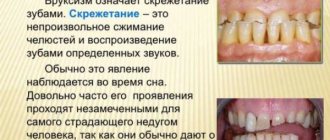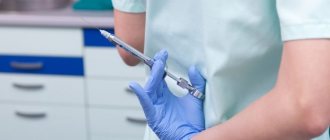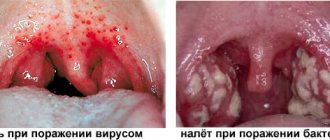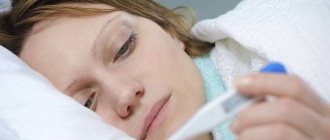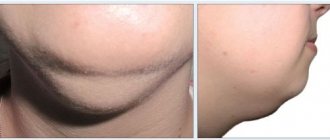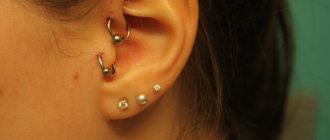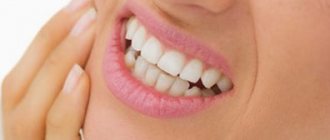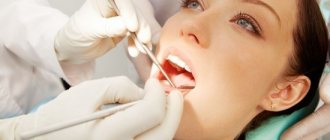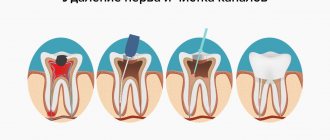Otitis or labyrinth
Many people wonder why the inside of the ear hurts and what is the reason for it. The most common disease affecting the ears is otitis media - inflammation of the tissues that make up the auditory organ.
© shutterstock
Otitis media can affect the internal, middle and external sections, causing excruciating pain. According to statistics, children get otitis media more often than adults. This is due to weak immunity. In medicine, otitis of the inner ear is called a labyrinth, due to the structure of the auricle.
The main cause of the disease is considered to be infections, as well as:
- Otitis media;
- All kinds of injuries;
- Hypothermia;
- ARVI diseases.
If you do not start timely treatment of pain inside the ear, this is a sign of meningitis or meningoencephalitis.
Signs of a labyrinth
The disease has an acute and chronic form. In the acute form, the symptoms are pronounced. The chronic form is expressed by muted symptoms, which worsen from time to time.
The labyrinth appears:
- Severe pain inside the ear;
- Dizziness;
- Nausea;
- Increased sweating;
- Involuntary movements of the eyeballs;
- Balance imbalance;
- Noise in the ears;
- Heart contractions.
Treatment options
When the ear hurts deep inside, doctors prescribe:
- Antibacterial therapy;
- Non-steroidal anti-inflammatory drugs;
- Drugs that improve blood circulation.
If there are no positive results from conservative treatment, doctors are forced to resort to surgery.
Causes
Patients who complain of ear pain when chewing food also note the presence of other symptoms. The pain may be constant, aching, or intensified by chewing processes.
Unpleasant sensations may occur during swallowing. Such symptoms are characteristic of diseases of the larynx and oral cavity. Painful sensations begin to develop at various stages of the progression of the disease, so at the first manifestations of the problem you need to contact a specialist for professional help.
Most often, such pain appears during diseases such as acute tonsillitis or tonsillitis. As a result of the progression of such ailments, pain occurs precisely when swallowing, while the patient may feel general malaise, sore throat and other symptoms.
Pain when opening the mouth is diagnosed with mumps, malignant tumors in the larynx or other part of the oral cavity. If a patient is diagnosed with a disease such as otitis media, then pain may be not only in the ears, but also in the jaw. Unpleasant sensations are observed with any form of otitis media. In addition, additional symptoms are observed, which are characterized by an increase in body temperature, a sharp decrease in the level of hearing, malaise of the body and severe pain inside the hearing organ. If you experience unusual sensations in the jaw during otitis media, you should urgently contact a specialist. If you ignore the problem or treat it with traditional methods, there is a high probability that otitis media will develop into a more serious form - purulent. In this case, the pain will be more severe, purulent and bloody discharge will begin to appear from the ear canal, and the process will be accompanied by a very high temperature.
Another serious problem with similar symptoms is labyrinthitis. This is an inflammatory process that is localized in the inner ear of the auditory organ. It is accompanied by the following symptoms: nausea, noise in the hearing organs, dizziness and headache, problems with coordination, a sharp decrease in hearing or its complete loss. Very often, patients complain of pain that radiates to the ears and back of the head.
Pain in the jaw can also be caused by inflammatory processes that affect different groups of nerve endings. If the disease has reached the trigeminal nerve, then the toothache will begin to radiate to the ear, and painful sensations will also be observed during chewing.
If the virus affects the facial nerve, it hurts not only in the ears, but also in the jaw area. Chewing becomes painful. The glossopharyngeal nerve is most often affected by malignant neoplasms, which affect the larynx, oral cavity, tongue and auditory region. A patient, without prior consultation with a specialist, may falsely think that pain when chewing occurs precisely as a result of ear diseases. It is worth noting that the above ailments do not affect the auditory organ, so it remains healthy.
If pain occurs when opening your mouth, the cause may be a foreign object in the ears or an injury. Both sudden changes in pressure and a head injury can damage the auditory organ. They may suffer from frostbite or burns, and dust or small insects can easily get inside the ear canal. In this case, the pain will be intense. Very severe pain occurs if the eardrum has been damaged.
Eustachitis can also cause an unpleasant feeling in the ears. Pain when chewing is not the only symptom. Patients often complain of congestion in the ear canal, the appearance of noise, decreased hearing levels, and the feeling of fluid rolling inside the ear, especially during slow head movements. The pain will be stronger at the moment of pressure drop.
Sulfur plug
Many people are interested in why the ear hurts when pressing inside. A common cause is cerumen plug - blockage of the passage.
© shutterstock
The disease develops over a long period of time and has a number of reasons:
- Poor personal hygiene – cotton swabs that push wax deep inside the ear;
- Increased secretion of sulfur;
- Impaired metabolism;
- High dust content in the air;
- High humidity;
- Frequent entry of water into the ear;
- The climate is too dry.
Signs of illness
At the initial stages, a small amount of collected sulfur does not cause pain or discomfort. Signs begin to appear when the passage is half blocked.
The illness is expressed:
- Dull pain inside the ear;
- Dizziness;
- Loss of balance;
- Headaches;
- A reflection of your own voice.
Then, if left untreated, the cerumen plug completely blocks the passage, resulting in hearing loss on one side.
Treatment options
When a large plug has formed, it can be seen on the outside of the ear. In other cases, the doctor does an otoscopy to help determine the size of the plug inside the ear.
Internal ear pain can be eliminated by rinsing, which should be carried out by an experienced and qualified doctor. What is it used for :
- Warm water;
- Hydrogen peroxide;
- Syringe without a needle;
- Medical instruments.
Simple recipes for ear pain
Sometimes it is simply not possible to see a doctor urgently with severe ear pain. But there is no need to despair, because there are several simple recipes that will help relieve unpleasant pain in the ear:
- Grind the onions to a paste form. We place a small part of it in gauze, roll it up and apply it to the diseased hearing organ. We knit a woolen scarf over the gauze to keep warm. This compress should be kept for 30 minutes;
- Finely grate one clove of garlic. Add a few drops of camphor oil to the resulting pulp. We put the resulting mixture into a napkin, fold it and insert it into the ear. It is worth maintaining it until the pain goes away;
- Pomegranate juice is mixed with honey, and the resulting mixture is lubricated on the surface of the ear canal using a cotton swab;
- Take 40 ml of ammonia, pour 4 ml of camphor oil into it, and dilute the resulting composition in water with two tablespoons of rock salt. Everything needs to be mixed well. Soak a cotton swab in the resulting solution and insert it into the sore ear. This solution is very practical, as it can be stored in the refrigerator for up to a whole year, so in case of sudden ear pain it will always come to the rescue;
- Add 1 teaspoon of hemp oil to boiled milk. The resulting solution should be instilled into the sore ear. Just a couple of drops is enough. This recipe not only warms up the hearing organs well, but also quickly relieves unpleasant pain;
- To get rid of ear pain, juice from basil leaves will come in handy. To prepare the juice, basil leaves need to be finely chopped and then squeezed. The resulting juice is instilled into the sore ear using a pipette. Just 3-4 drops are enough to get the desired effect;
- Juniper tincture has very good anti-inflammatory properties. To prepare it you need 6 tablespoons of this product and a shot of vodka. Using this recipe, you can also prepare a tincture of golden mustache. The product should be infused in a dark place for one week. The product can be stored in the refrigerator for a long time, and therefore will quickly come to the rescue if necessary. You need to moisten a cotton swab in the tincture and rub it on the sore spot. A small piece of cotton wool is well moistened in the tincture and inserted into the ear for one hour.
No votes yet.
Please wait…
Pimples
When a lump appears and hurts inside the ear, this indicates a malfunction in the body, which can be harmless acne or the beginning of serious purulent processes.
© shutterstock
The causes of acne inside the ear are::
- Colds;
- Infections;
- Stress;
- Unbalanced diet;
- Allergic reactions;
- Hormonal imbalances;
- Insufficient hygiene;
- Hypothermia;
- Bad habits;
- Unsuitable environmental environment;
- Diabetes;
- Problems with the gastrointestinal tract.
Signs of illness
Often, acne does not show symptoms and goes away on its own. But sometimes, they can cause painful discomfort, manifesting themselves :
- Severe pain;
- Itching;
- Increase in temperature;
- Ulcers;
- Boils;
- Abscesses;
- Hearing impairment;
- Discomfort when talking, eating or yawning.
If you experience such signs and persistent pain, you should immediately contact a medical facility for advice to avoid possible complications.
Treatment options
When a pimple hurts inside the ear, the doctor must find out the etiology of its origin. And only after that prescribe treatment, which may include :
- Antiseptics;
- Antibiotics;
- Various ointments;
- Compresses.
First aid for ear pain
So, what should be the first aid for ear pain? What can you offer in total?
- Oral pain reliever (eg, ibuprofen, paracetamol).
- If you have a runny nose, sore throat, or adenoids, be sure to offer vasoconstrictor drops in the nose to relieve swelling in the nasopharynx and clear the passage of the auditory tube. This improves the outflow of inflammatory fluid from the ear, reduces pain and prevents complications.
- For the same purpose, doctors often recommend an oral antihistamine.
- If pain in the ear has just appeared (no more than 2-3 days have passed), and there is no discharge from the ear, otipax or otinum are suitable.
Otipax can be used even by infants, pregnant women, and nursing mothers; Otinum is recommended from 1 year of age. Pregnant and breastfeeding women - with caution.
Both remedies have an anti-inflammatory and analgesic effect on the eardrum, relieving its tension. The analgesic effect in Otipax is more pronounced due to lidocaine. These ear drops do not have a systemic effect.
All other drops are prescribed by a doctor only! And these are only with an intact eardrum!
If they come to you with a prescription from a doctor, then you will most likely see an antibiotic orally or parenterally, antibacterial drops in the ear, a vasoconstrictor for the nose.
In this case, do not forget to offer something to the antibiotic to restore intestinal flora (if the antibiotic is prescribed orally), and a hepatoprotector to protect the liver.
Sinusitis
Pain inside the ear is caused by sinusitis, a common inflammatory disease that develops as a result of the runny nose, flu, measles and other infectious diseases. Sinusitis is more often diagnosed in children, but adults are also at risk.
© shutterstock
A child who has reached 3 years of age is at risk of developing a chronic form of the disease, since he is not yet able to describe all the symptoms.
Signs of illness
Inflamed sinuses radiate pain to the ears, forehead, temples, and jaw. The progression of sinusitis is indicated by:
- Heat;
- Regular cough;
- Stuffy nose;
- Mucus with pus discharged from the nose;
- Unpleasant odor from the mouth.
Treatment options
Before starting to treat a child, the doctor prescribes x-rays, ultrasound and tomography to make sure the diagnosis is correct, since sinusitis is similar to the symptoms of sinusitis.
Used to treat illness:
- Medicines that constrict blood vessels;
- Sprays or drops;
- Antibiotics;
- Sinus rinsing.
At home, the patient can use herbal teas to relieve cough and decoctions to rinse the nose.
What to do if your child has an earache?
Ear pain in children, as a rule, occurs at the most “inopportune moment”: on vacation, on weekends, at night... Sharp, completely unexpected, often occurring at night or late in the evening, pain in the ears does not allow you to sleep, worries and causes a lot torment. How to calm your baby? How to help a child without harming his health?
First you need to analyze the situation and understand what reasons could cause this pain. About 75% of children under three years of age have problems with ear infections. Inflammation of the middle ear occurs in half of children who have reached the age of one. By the age of six, this proportion increases to 90%. This is due to the structural features of the Eustachian tube in a child. Ear diseases are especially relevant for children in the first year of life due to the anatomical and physiological structure of the nasopharynx: fluid and bacteria easily enter the ear from the pharynx. The Eustachian tube in children is short, wide and located approximately at the same level as the pharynx. In addition, it opens and closes poorly, which together allows germs and secretions to easily get from the nasopharynx into the ear. As the child grows, this tube lengthens, narrows and is located at an angle to the pharynx, as a result of which the secretions have to climb up to get into the ear. Therefore, frequent ear diseases disappear with age in children. In addition to viruses and bacteria, any liquid can easily enter a child’s ear, causing serious inflammation. And such a nuisance can happen at any time: during bathing, while feeding, even during sleep - the child will burp, liquid will flow into the ear and that’s it! With colds and viral diseases, mucus always collects in the respiratory tract, which also easily gets into the child's ear. Therefore, be attentive to your baby when he suffers from any respiratory illness, and check from time to time whether his ears hurt.
Sore ears can cause severe discomfort to a child, pain, shooting, tingling, and even various types of discharge from the ears are possible. But it happens that ear disease does not make itself felt at first, or the child cannot respond adequately to it. Very often, babies’ ears hurt, but they still don’t know how to explain their feelings. It all depends on the parents...
So, to help parents, learn more about the causes of ear pain in a child:
1. Infectious diseases of the outer ear... The external auditory canal is more susceptible to infection. Normally, it is protected from infection by a layer of earwax. If it becomes too thin, the excess moisture causes softening and swelling of the skin lining the external auditory canal. Over time, cracks may appear in the skin. If, on the contrary, the sulfur dries out, then the skin of the ear canal begins to peel off, and scales appear on it, like dandruff. Any of these conditions leads to increased sensitivity of the external auditory canal and to infectious diseases. The most benign type of ear infection is otitis externa (also known as swimmer's ear because the inflammation most often develops after large amounts of water enter the ear). Otitis externa can occur after an unsuccessful attempt to clean the ears if hair product or other irritating liquid accidentally gets into them. A sign of an infection of the outer ear is a rash on the skin of the external auditory canal. The cause of the disease can be pathogenic bacteria or fungi. In addition, abrasions are often observed in the outer third of the ear canal, which are caused by the introduction of foreign objects (for example, cotton wicks) into the ear. Extra objects, such as small hairs from haircuts, can get into the ear canal and irritate the ears. Boils sometimes appear there.
2. Middle Ear Infections... Inflammation of the middle ear is called otitis media. This disease most often occurs in infants between 6 and 24 months of age and in children between 4 and 6 years of age. After 8 years of age, the incidence of the disease decreases. Middle ear infections, both viral and bacterial, are the most common cause of ear pain. The intensity of the pain increases with chewing, swallowing and blowing your nose, as these actions increase the pressure in the middle ear cavity. Colds of the middle ear most often occur in the fall and winter, when people gather together in heated indoor spaces, where bacteria and viruses circulate with currents of warm air. Otitis media usually develops with swelling of the Eustachian tube, that is, with its blockage (the structural features of the Eustachian tube in young children were discussed a little higher). Swelling of the tube is usually a consequence of a cold in the upper respiratory tract, an allergic reaction, or enlargement or inflammation of the adenoids. Irritation and blockage of the eustachian tubes can develop if the baby suckles while lying on his back. Blockage of the Eustachian tubes leads to increased pressure in the middle ear cavity and accumulation of fluid there. Inflammation may affect the eardrum. A viral or bacterial infection can cause a lot of complications: increased pressure and fluid accumulation in the middle ear cavity, inflammation of the eardrum and sometimes its rupture. In some cases, children suffering from otitis media appear completely healthy. The following symptoms most often occur: a feeling of heaviness in the ear, severe pain, increased nervous excitability and irritability, the child cries for a long time. He may develop diarrhea, nausea and vomiting, loss of appetite, and weakness or lethargy. It is common to feel pressure or fullness in the ear, as well as noise, ringing or buzzing in the ear. If the eardrum ruptures, then first bloody (or bloody) discharge begins to come out of the middle ear, and then pus. When fluid leaks from the middle ear cavity, the pressure in the ear decreases; for this reason, after the eardrum ruptures, the pain usually subsides. In acute otitis media, the eardrum usually heals itself after a rupture. With chronic otitis media, the integrity of the eardrum usually does not recover on its own, so hearing loss develops. The integrity of the eardrum can be restored through surgery.
3. Consequence of a strong blow to the ear: after a strong blow to the head in the ear area, bleeding may occur.
4. Foreign body in the ear: An insect may crawl into a child's ear or a small object may accidentally become lodged in the child's ear and be difficult to remove.
5. Ear pain can also be caused by changes in atmospheric pressure (for example, during air travel) or diving to depth.
6. The pain may radiate (“give”) to the ear... The cause of the pain may be your teeth, tonsils, tongue or jaw, but it seems that your ears hurt.
Symptoms of ear pain:
1. Incomprehensible anxiety of the child. 2. Unexpected cry of a child, cry. 3. Increased body temperature. 4. Nasal discharge. 5. Child's anxiety, irritability. 6. The child may wake up moaning, crying, screaming at night. 7. It is difficult to calm a child. 8. The child holds the ear, touches it, scratches it. 9. Rubbing his head on the pillow. 10. When you press lightly on the ear canal, the child cries. 11. Discharge from the ear (yellow or greenish in color, possibly some blood) - perforation of the eardrum. Be sure to take your child to the doctor ! 12. Worse breastfeeding (if we are talking about an infant). 13. Is capricious. 14. Hearing loss - may continue until the pus inside the ear disappears completely, sometimes up to 4 weeks.
Ear pain gets worse at night, and this is a fact. And not just because it's harder to find medical help when everyone has gone to bed. Clogged auditory tubes, which run from the back of the throat to the middle ear, are the most common cause of ear pain in children and adults. And the situation is usually aggravated by a runny nose, sinus infection or allergies. During the day, you keep your head upright and your eustachian tubes naturally drain into your throat. And when you chew or swallow, the muscles of the auditory tubes contract, allowing air to enter the middle ear. But at night, during sleep, everything changes. You fall asleep feeling just great. But these pipes no longer drain naturally. You don't swallow as often and they don't get enough air. The air already in the middle ear is absorbed and a vacuum is formed, sucking the eardrum in... and... You wake up with severe ear pain...
What to do if your child has ear pain.
- Put him in prison. A few minutes of sitting will reduce the swelling and the eustachian tubes will begin to drain. Swallowing will help relieve pain. If we are talking about a very small child, place the child so that his head is raised with the help of pillows.
— Older children can be given chewing gum . Many people know that this is a way to clear your ears on a plane, but have you thought that you can do this in the middle of the night? The muscular action of chewing will clear the auditory tubes.
- Ask for a yawn. When you yawn, you move muscles that open your auditory tubes even better than chewing gum or sucking on a piece of candy.
- Give a pain reliever , such as paracetamol or ibuprofen (pain relief is important). Do not give aspirin to children under 12 years of age.
— Use nasal drops Clear the nose of possible contents and instill vasoconstrictor drugs into it (for example, Sanorin, Nazivin, Otrivin, Tizin or Vibrocil). This will help remove excess mucus blocking the Eustachian tube. This will also drain the pus that has accumulated in the middle ear, and it will flow down the pipe into the throat.
— You can make a compress only if the child does not have a fever . Since compresses are contraindicated at temperatures. For a compress, take alcohol and divide it in half with water. You can use camphor oil. Just remember that any compress liquid should be warm. A compress is made in 3 layers. The first layer of moistened gauze is laid out around the ear. The second layer is made of wax paper or polyethylene. Each layer should be larger than the other. A cotton wool is placed on top. Then everything is wrapped with a scarf or scarf. The ear warms up and the child feels better. You can apply a warm heating pad to your ear if there is no fever. When body temperature rises or in the presence of purulent discharge, warming procedures are strictly contraindicated.
— If the doctor prescribed you drops, for example, Otipax or calendula tincture, they should be warmed. Then place the baby on his back, turn his head to one side, and pull his ear up and to the side. Now you can drop it into the external auditory canal. Ask your child to lie down for a while. You can put a piece of cotton wool in your ear. For purulent otitis media and advanced ear diseases, an antibiotic must be prescribed! Ear diseases are very dangerous, and therefore these recommendations are provided for informational purposes only; consultation with a doctor is required!!! If ear pain and fever persist for 2 or more days, consult a doctor. The doctor will prescribe treatment. You must complete the full course of treatment prescribed by your doctor. If the infection is not treated, it can spread to the brain, resulting in a serious, life-threatening illness (meningitis). After completing the course of treatment, the doctor should examine the ear again to ensure complete recovery. It is important to get checked by a doctor if you suspect hearing loss. If you suspect your child may have difficulty hearing, is unable to concentrate in school, is unresponsive to requests, or tends to turn the TV up louder, be sure to consult with your doctor. In this situation, it is necessary that the doctor also examine the ears using a tympanometer to determine the pressure in the ears.
How to try to prevent ear diseases in a child? So, prevention:
- breastfeed your baby for as long as possible: it has been noticed that such babies are much less likely to suffer from ear pain;
- if you are feeding your baby from a bottle, keep it slightly elevated (approximately 45 degrees);
- Avoid contact of the child with allergens: the baby’s room should always be clean and fresh; dust, lint, animal hair and soft toys, foreign odors (tobacco smoke and chemicals) can also provoke ear inflammation;
- Maintain your child’s hygiene by constantly clearing the nasal passages;
- treat colds and ARVI in a child in a timely manner - before they turn into ear inflammation;
- put a hat on your child in spring and autumn, when the weather is cold and windy: there are many reflex zones on the head, and a cold always causes a runny nose, which is often the cause of ear pain;
- do not open the front window in the car when the child is in the back seat: the wind blows with great force directly into the child’s ear;
- after suffering from otitis, a child is contraindicated to swim and dive, because this will definitely cause a relapse;
- Avoid sudden changes in temperature for a sick child: for example, do not transport the child to other countries during illness, even if the climate there is very warm.
- If you or your children suffer from swimmer's ear, use earplugs to prevent water from getting into the ear. It is very important to keep your ears dry. Use a hair dryer to dry your ears after swimming. Do not use cotton swabs or other objects to clean your ears. Repeated attempts to remove earwax using a cotton swab or similar object may cause the wax to accumulate even deeper in the ear.
- If you work in a loud environment, wear ear protection, even when you are at home.
- Avoid getting foreign objects into your ear.
- Teach your child to wipe his nose or blow his nose using very “weak blowing” movements. When “actively” blowing your nose, mucus from the throat can get into the ear. If small children have difficulty breathing, you need to carefully suck out the mucus from the nose using a syringe without a needle or special nasal suction devices.
Prevention is much less troublesome and less painful than treatment. Caution never hurts. And whether a child gets ear disease or not, in most cases it still depends on you, dear parents.
Be healthy!
- Author - Polukhina Anastasia Aleksandrovna
- 15.10.2015
- All consultations by the author
Acoustic neuritis
When the inner ear hurts, the cause is often acoustic neuritis, caused by viral or bacterial infections, all kinds of cranial injuries, toxic effects, prolonged noise exposure, and tumors.
© shutterstock
Signs of illness
The main sign of neuritis is extraneous sounds in the ears, which have different intensities.
An insidious disease, in its acute form, can completely deprive a person of hearing in one or two ears at the same time, which occurs within a few days or hours.
In some cases, patients complain of severely impaired coordination, dizziness and involuntarily moving eyeballs.
Treatment options
Treatment of acoustic neuritis requires a comprehensive approach, including:
- Antiviral medications;
- Antibiotics;
- Detoxification therapy;
- Diuretic drugs;
- Medicines that relieve pain in the inner ear;
- Medicines that improve blood circulation;
- Electrophoresis;
- Magnetotherapy;
- Acupuncture.
In advanced cases, when a person has already lost hearing, doctors offer hearing aids - a modern treatment method that restores hearing.
What questions should a customer ask when complaining of ear pain?
- How long have you had ear pain? (Maybe your ear has been hurting for six months now, and it’s not the problem at all? Or maybe the pain arose after diving? In this case, anti-inflammatory ear drops OTIPAX, OTINUM will help.)
- What else is worrying? Runny nose, sore throat, fever? If we are talking about a child: are there no adenoids?
- Is there any discharge from the ear? If there are any, drops in the ear are not recommended; immediately send them to a doctor. (However, in any case, if you have ear pain, you need a doctor). If it is external otitis, the doctor will prescribe drops containing an antibiotic (for example, ANAURAN), and possibly also a hormone (for example, SOFRADEX, GARAZON, POLIDEX, DEXON), which have an antibacterial and anti-inflammatory effect. If he sees purulent perforated otitis media, he will prescribe drops that are safe for the auditory nerve (OTOFA, CIPROMED, NORMAX). And in the case of otomycosis - an antifungal drug orally and locally (CANDIBIOTIC).
Inflammation of the lymph nodes
If your ear hurts when pressed, the cause may be an inflamed lymph node, which protects the human body from the penetration of all kinds of bacteria.
© shutterstock
In medicine, there are many diseases that provoke inflammation of the lymph nodes, which radiate pain inside the ear:
- Otitis;
- Sinusitis;
- ARVI;
- Oncological, sexually transmitted and skin diseases.
Signs of inflammation of the lymph nodes
The disease manifests itself:
- Seals behind the ears;
- Increase in temperature;
- Insomnia;
- Loss of appetite;
- General weakness;
- Headaches;
- Purulent rashes near the ears.
Treatment options
Before prescribing any treatment, the doctor must conduct a diagnosis to find out the true cause of the inflammation.
Treatment for the disease consists of taking a course of antibiotics that will destroy all bacteria in the body.
There are also effective folk methods, but before you start using them, you should consult with your doctor.
Symptoms
The main symptom that unites all these conditions is pain in the ear and neck . Depending on the diagnosis, other symptoms appear, which, however, often overlap in different pathological processes. This is due to the fact that many of them affect the nerve endings of the spine, disrupting blood circulation and supply to the brain. Therefore, they are often accompanied by dizziness, unsteadiness, loss of coordination, nausea and vomiting. Inflammatory processes are characterized by increased temperature and impaired mucus outflow.
Mumps, which is popularly called mumps, is manifested by swelling , maybe on one side or both. The pain intensifies when pressing on the neck area under the ear, as well as when chewing and swallowing.
Neuralgia of the facial nerve, accompanied by impaired facial expressions , shooting pain.
Inflammation of the maxillary sinuses is usually characterized by increased pain when bending over and nasal congestion on one side.
With arterial hypertension, there is a persistent increase in blood pressure .
Doctors treating ear pain inside
When there is pain inside the ear, you should see an otolaryngologist. He will conduct an examination, make a diagnosis and prescribe the necessary therapy.
Sometimes, a visit from one of the specialists may be required:
- Therapist;
- Dermatologist;
- Surgeon;
- Dentist.
© shutterstock
Complications
If ear pain occurs as a result of swallowing, then special attention should be paid to this symptom, since it occurs at the first stage of development of otitis media. The pain does not go away, but only intensifies and takes on a permanent form of impact. To cure the disease and prevent it from becoming chronic, it is necessary to contact a qualified specialist in time. Otherwise, you may lose your hearing forever.
If unpleasant sensations in the hearing organs are accompanied not only by ordinary pain, but also by headache, dizziness, nausea, swelling behind the hearing organs and chills, you need to call an ambulance, as the situation becomes very life-threatening. Otitis media can cause the following complications:
- Serious damage to the inner ear;
- Meningitis;
- Formation of pus in the brain matter;
- Facial paralysis.
